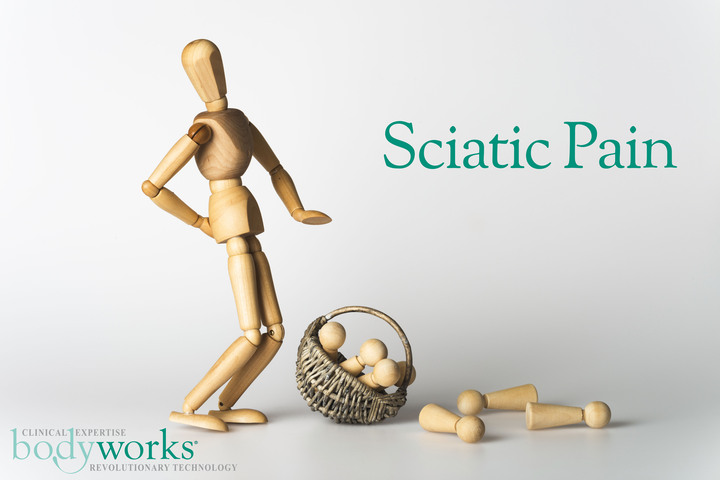Sciatica is one of those wonderful medical terms which we now use in everyday conversation to cover a whole host of aches and pains in our back, hips and legs.
But, as I’ve spoken about in detail before, there are a number of conditions that can look similar to sciatica at first glance but, and this is a key point in the getting pain free process, need a different treatment approach.
First up, let’s be clear about what sciatica is (clinically):
Sciatica is irritation or impingement of the sciatic nerve which runs from the disc L3 in your lower back to the base of your feet
Symptoms include:
- Pain in the buttocks or leg, often worse when sitting.
- Burning, tingling or “pins and needles” down the leg.
- Weakness, numbness, or difficulty moving the leg or foot.
- A constant pain on one side.
- Shooting pain that makes it difficult to stand up
Interestingly, official sciatica symptoms don’t include back pain!
Conditions that can be confused with sciatica
- Nerve problems from other discs – medical sciatica is only from L3 disc, however other discs in the lower back can cause similar symptoms into the legs, feet and buttocks.
- Hip Pain – Bursitis, tendonitis, referred pain from the lower back or knee as well as arthritis in the hip joint can all cause pain in the hip, buttock, outer thigh and lower back. As this irritation causes inflammation it can affect the sciatic nerve (which runs through the hip) from the “outside in”. So you end up with sciatica / nerve pain but caused by the hip joint rather than the spine.
- Piriformus Syndrome – which is also called “wallet syndrome” and is literally a pain in the ass! The piriformis muscle is a small muscle located deep in the buttock (behind the gluteus maximus). And guess which nerve passes right alongside the piriformis muscle? Yup, you guessed it – the sciatic nerve. Grumpy, sore muscles contract making them “fatter” and inflamed. So, just like in hip pain we have irritation to the sciatic nerve due to other structures it passes alongside.
- Iliotibial Band Syndrome (ITB) – The Iliotibial Band (ITB) is a thick band of fascia that runs along the outside of the thigh from the top of the hip to the outside of your knee. And it is crucial for stabilising the knee. But when it gets twisted / unhappy one of the symptoms it can cause is a tingly sensation in the thigh similar to nerve pain “tingles”. It can also cause pain into the hip and lower back.
What can I do?
The first step is always to get a thorough clinical assessment and correct diagnosis.
These conditions can have similar symptoms on the surface and can easily by missed or confused.
And then you’re stuck treating the wrong area and . .. not making any progress at all.
Take the time upfront and you may find some simple movement changes or exercises can resolve much of the pain.
If you have more questions about sciatica then come to our FREE seminar on Sciatica on Wednesday 30 October at 11.30 at Bodyworks Clinic with Estelle Mitchell Musculoskeletal Specialist.
Check out our website www.TheBodyworksClinic.com, our Facebook page “Bodyworks Health Clinic” or call us on 952 883 151



Thank you so much for sharing your expertise and knowledge. This summer I had the first sciatica in my life, L5/S1 disc came out of MRI. Now I am recovered and doing well. But your information is very valuable and I have shared it with some family and friends. Thank you!
Hi Charo,
Thank you for your comment and my apologies for the slow response!
I’m glad that the information helped you, sciatic pain can be very uncomfortable and interfere with your every day life in many ways. I am glad you had good support and are doing better!
Take care and all the best,